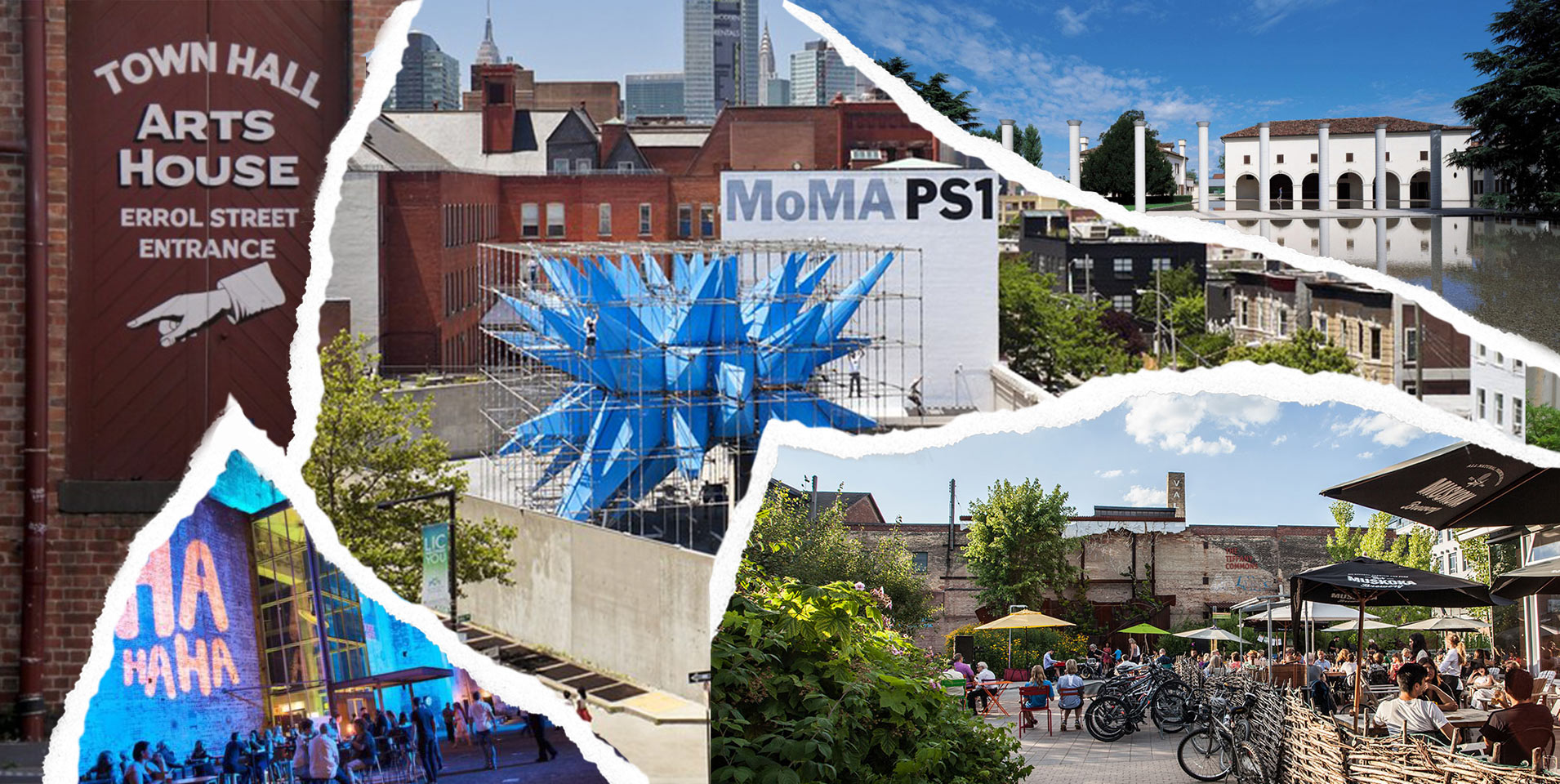
From our locked-down, mask-bound corner of the world, we’ve had the luxury of looking outward and to be inspired. Through our ongoing working relationship with the Abbotsford Convent Foundation, we have been engaged to distill, document and communicate a strategic place brand identity for the convent precinct.
We’ve been benchmarking best practice creative and arts precincts around the world, looking to how start-ups and storied institutions are seeking to inhabit a piece of the ‘third space’. Conceptually, programatically, culturally, leaders are repurposing, reorienting and reinventing places, modes and models. By utilising what is at hand, and progressing iteratively and openly, programming and community form organically, in ways neither preconceived, nor pre-digested.
Beyond closed borders and the ‘new normal’ there are spaces and places that have–by actively seeking ‘the next’–inadvertently laid the foundation for success post-COVID, IRL (in real life). We thought we’d share a few highlights, and reflections below.
Villa Kultur, Copenhagen
By day, a co-working space for creatives. By night, a space for concerts, exhibitions, workshops, talks, dinners and the occasional party. Not ‘done’ when it opened in 2017, the space is ever evolving as it develops organically together with the cultural activities that shape the community around it.
- A co-working space transformed from an old villa owned by the municipality of Copenhagen. Transformed into a space for creatives to come together with a purpose of changing a mindset about culture.
- The original 1000-square-metre site is 150-years-old, with a ballroom, entrance hall and library. An orangery planted in 1935 is also on site.
- Hosting 80-100 people on a daily basis as a workspace, the 800-square-metre space can be adapted to fit larger gatherings for concerts or exhibitions. The creatives that use the space daily are made up of designers, photographers, film-makers, food writers and journalists.
Why it works
As the space was never ‘finished’ before it opened, there is potential for an ever evolving centre as culture develops organically depending on tenants and visitors. The community assembles around shared values, rather than by theme or sector, ensuring a diversity of tenancies and programming to service the gamut of interest and need.

MoMA PS1, NYC
What would become MoMA PS1 was founded in 1971 by Alanna Heiss as the Institute for Art and Urban Resources Inc, an organisation with the mission of turning abandoned, under-utilised buildings in New York City into artist studios and exhibition spaces. Now, MoMA PS1 is one of the largest art institutions in the United States dedicated solely to contemporary art. In addition to its exhibitions, PS1 hosts performance, music and programs for young creatives with the Museum of Modern Art.
- One of the largest art institutions in the United States, it is managed by the Museum of Modern Art while the building is owned by New York City. Housed in a 100-year-old, 125,000-squarefoot Romanesque Revival school building, PS1 is in Long Island City, Queens.
- Internationally renowned for being innovative and experimental, with the prestige of being affiliated with MoMA. As well as being a premier contemporary art centre, PS1 hosts performances, music concerns and programs for young creatives.
- Attracting 200,00 people a year from all over the world to the site, PS1 is a major tourist attraction in New York, as well as being a key cultural meeting place for locals.
- Known for being the younger, more experimental sister of MoMA in Manhattan, PS1 has the opportunity to keep pushing extended its offering to encompass the cutting edge of contemporary arts and culture.
Why it works
The iconoclastic meeting of high bastion of institutional art and grass roots movement, combined with the ‘hackability’ of repurposed, derelict urban spaces makes for a culture (and expectation) of invention and reinvention. The frisson of fringe and experimentation with serious institutional spending power makes for heady programming opportunities and audience experiences alike.

Cockpit Arts, London
Cockpit Arts is a social enterprise and self-declared incubator, with studios for over 140 independent craftspeople across two sites in London. Offering business coaching, support and studio space for makers to develop and grow successful practices. Visitors have an opportunity to meet and buy direct from makers.
- In two locations in London; Deptford and Holborn, which was originally an eighteenth century cockerel fighting arena. When it was established in 1986, Cockpit Arts was a small community of only a few creatives. Growing to 170 businesses in the years since, the organisation is now well established as a pioneering creative incubator.
- As a social enterprise, it is known and respected for being pioneering in creating opportunities for craftspeople to develop careers.
- A snapshot of the demographics of creatives working at Cockpit Arts in 2019 showed a greater diversity in gender and ethnicity than craft practice UK-wide.
- As a workplace, there is generous infrastructure suitable for the number of people to be safely working on site.
Why it works
The Cockpit model elevates craft from the periphery of art practice to a heralded vehicle for self-expression, statement and commentary. Further, it lays the groundwork for tenants to create sustainable commercial enterprises, through a tailored, sector specific program of capacity building and business literacy. As a result, the community of makers and businesses is naturally more inclusive to those for whom craft wouldn’t have provided a practical path to financial viability or security. The wider community is positively impacted by the plurality of experience and voices who can access the platform, and share their stories.

Evergreen, Toronto
Evergreen is an incubator that explores sustainable practices that will shape the flourishing cities of the future. Set in a collection of heritage buildings, it welcomes visitors year-round to public markets, conferences and events, outdoor activities and public art. Operating as a social enterprise, profit generated is used to fund projects across Canada – engaging in creating and sustaining healthy urban environments in schools, public spaces, housing developments and transit systems.
- The ‘Brick Works’ is a collection of deteriorating heritage buildings transformed into a showcase of green design and an award-winning public space. It is in the heart of Toronto’s ravine system, northeast of the city centre.
- Well known in the local area for public markets and education programs, including the Children’s Garden. Larger events such as conferences, celebrations and symposiums are also popular at Evergreen.
- Evergreen welcomes over 500,000 visitors a year, with a varied demographic depending on the event – public markets, conferences or school programs and camps.
Why it works
Evergreen applies principles of curiosity and creativity beyond the bounds of individual practice or discipline. As with others in this shortlist, the repurposing of civic assets and the incumbent license with this reinvention (for experimentation and organic development) has offered a platform for innovative and divergent thinking and programming. The breadth of community occupation, education and events exponentially expands the potential impact of the site. The grant scheme lifts the brand and model beyond a specific site, to the nation.


